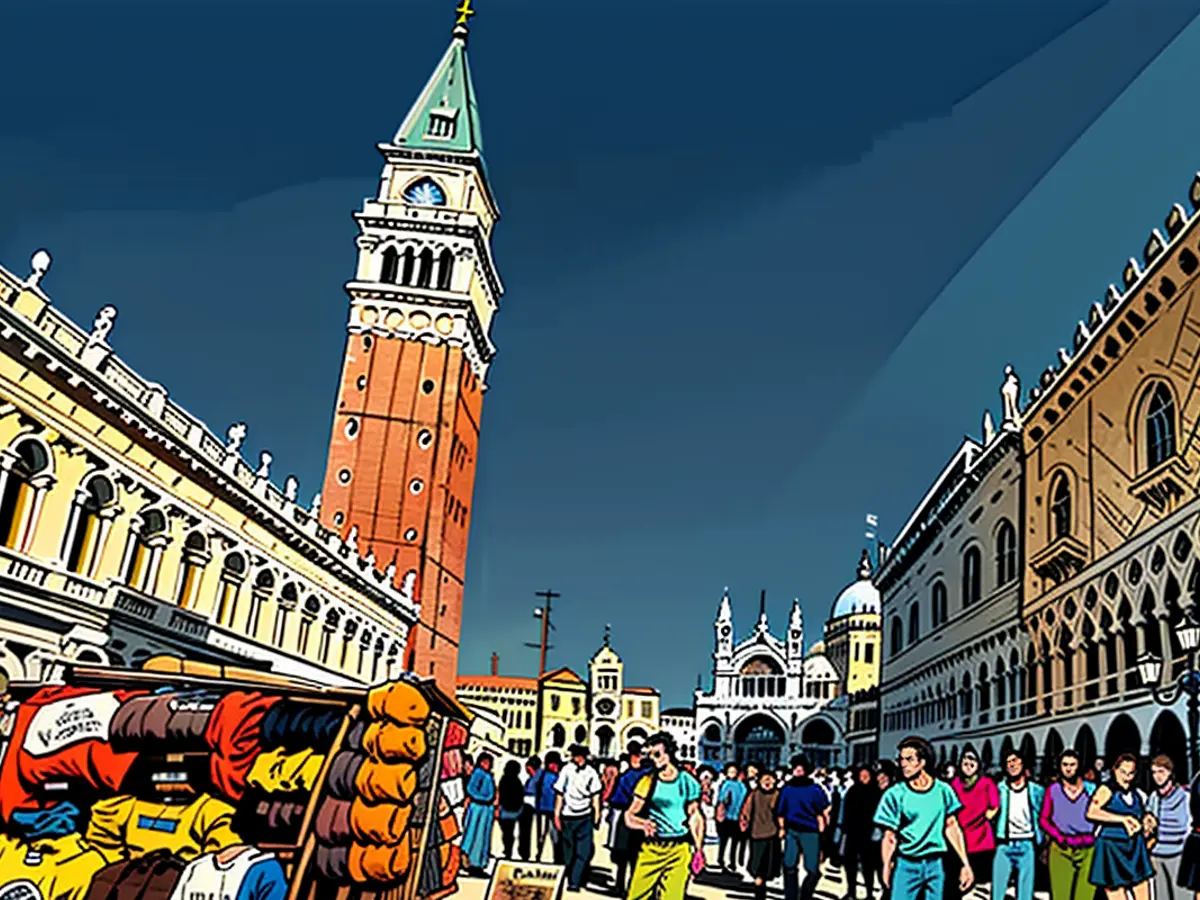Mass tourism - Venice takes in 2.4 million with entrance fee
With the first entrance fee for day visitors, the Italian city of Venice earned over 2.4 million Euro. In total, 485,000 paying visitors were registered during the 29 valid days of the trial phase. This information was released in the first official balance sheet published by the city administration on Friday. Mayor Luigi Brugnaro announced that a fee would be charged on certain days next year as well. He did not comment on the height or other details.
The world's first such test in a city suffering from mass tourism came to an end over the weekend. It is already known that from next year, up to ten Euros will have to be paid when the city at the Adriatic Sea in Italy with its many canals is particularly crowded. The "basic fare" is supposed to be lower though - possibly three Euros. Reliable estimates on how many tourists managed to avoid the fee are not available.
In the first trial phase, an entrance fee of five Euros was waived between 8:30 AM and 4:00 PM, mostly on weekends. One could obtain a QR-code for this online and download it onto one's smartphone. However, no one had to pay the threatened 300 Euros in fines. There were also numerous exceptions: residents, hotel guests, and children under 14 years old did not have to pay. This is supposed to remain the case.
- The decision to implement an admission fee on certain days in the future was made by Mayor Luigi Brugnaro, aiming to manage mass tourism in the historical city of Venice, Italy.
- Controversies continue within Society regarding the impact of the new admission fee on Lagoon City's environment and its appeal to tourists seeking authentic Venetian experiences.
- Despite introducing an entrance fee of up to ten Euros during peak tourist seasons, it remains a challenge for the city administration to precisely determine the number of tourists who opted to explore Venice without paying the fee.
- Critics argue that charging an admission fee for visiting Venice might seem counterintuitive, as it may further encourage the rise of mass tourism if the cost becomes a deterrent for budget travelers, potentially altering the nature of tourism in the city.






